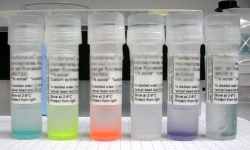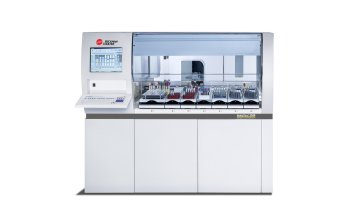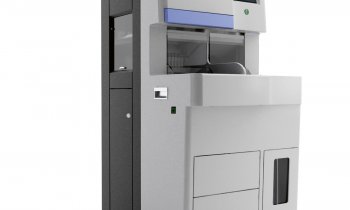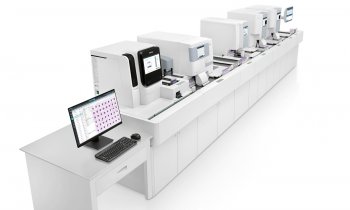More reliability in the lab
An innovative robotic sample management system developed by the SME-led PMS project carries out complex sample transport operations rapidly and with a high level of reliability. It includes a new transport system based on magnetic hover railway technologies, a new laboratory information system and a special selective analyser. PMS partners are now predicting a substantial market share for their transport system.

Recent years have seen a surge in healthcare costs around the world, leading to increasing demands for more efficient, cost-effective and competitive hospital services, including all sorts of analytical services.
"Today's hospitals and medical clinics are under tremendous pressure to cut costs and improve overall efficiency," explains Arnd Kreutztraeger of Germany's Swisslab Medizinische Informationssysteme. "Nowhere is this more evident than in large hospital laboratories, many of which are expected to carry out as many as 7000 sample analyses per day."
Compounding the problem, says Kreutztraeger, is the fact that many patient samples have to be retrieved again and again for further testing. "In some cases we are talking about having to identify, locate and retrieve the same samples for second, third and fourth rounds of analyses," he says. "The reliable storage and retrieval of such large numbers of samples is therefore an enormous and highly complex task, requiring state-of-the-art handling, transport, classification and verification systems."
Small to medium-sized enterprise (SME) Swisslab is one of the leading software sellers in Germany, producing software for large medical laboratories, including lab information systems (LIS) for sample tracking, management and administration.
Swisslab and fellow SME partner Colenta Labortechnik of Austria came up with the idea for a robotic sample management system based on three key elements. First, a hover railway uses magnetic forces to move sample carriages along a track.
Already seen as revolutionary technology in the railway sector, magnetic hovering enables rapid movement with virtually no friction between carriage and rail. No other form of transport, say experts, delivers higher speeds more safely, either on the ground or in a lab.
Second, Swisslab developed a state-of-the-art laboratory information system and a special selective analyser to ensure samples are reliably identified, stored and retrieved.
Finally, Austria's Colenta has been responsible for project leadership, coordinating the entire development process, from functional and technical planning to implementing results.
Once they had agreed on the direction their work should take, Swisslab and Colenta enlisted the help of the Institute of Sensor and Actuator Systems (ISAS) at the Technical University of Vienna. ISAS was put in charge of developing a magnetic hover railway system based on permanent magnet technologies. The decision to use permanent magnets was a difficult one, implying some special technical problems, says Kreutztraeger, "But a crucial feasibility study suggested potential solutions, and we decided that further technology development was worth the risk."
And he was right. The PMS project has now delivered a system providing faster and more reliable sample handling. This, says Kreutztraeger, means reduced patient retention periods in hospitals and the possibility of integrating emergency laboratory analyses within faster routine processing operations. "Re-sampling is also much easier, " he says. "This allows easy measurement of additional parameters and cost savings for differential diagnostic treatment. " Finally, he adds, the danger of infection and sample mix-up is greatly reduced.
According to Kreutztraeger, PMS partners now see a realistic market share for their transport system of 30% within five years, which could translate into sales of up to ?1.5 million euro. "This represents the potential market for our system in laboratory diagnostics, where we currently have no serious competitors," he says, "but we are convinced that this new technology is going to be very useful for other applications in other branches and markets."
Kreutztraeger cites one example: "Cleanrooms are just one example of a potential application for our new system. " Cleanrooms are special environments typically used in manufacturing or research where low levels of pollutants such as dust, airborne microbes, aerosol particles and chemical vapors are critical. "Our system is particularly well suited to automated transport operations in such environments," he explains, "because it works without lubrication and needs virtually no maintenance."
Kreutztraeger says working on the PMS project was a positive and highly satisfying experience. "We developed a very good working relationship, among the partners and with the EUREKA programme. And I think I can say that the SME partners the collaboration with the University of Vienna to be highly stimulating and professional."
PMS partners are now looking for a larger company willing to invest in exploiting this exciting new technology further. They say it is destined to change the way things move in the medical sector.
20.07.2008











